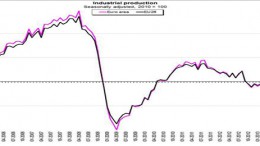Q2 Earnings preview – easier FX, sequentially a bit better growth and hurdle rate has come down
MADRID | By The Corner | Yet again this year equities have moved higher despite negative EPS revisions. While JPMorgan started the year with a constructive outlook on equity markets, they believed that for the 4th year in a row IBES projections would need to be downgraded. The investor concern now is that negative revisions could continue into H2, similar to the trend observed in Europe in each of the last three years.






